This Tues. June 8 at 5:00 our City Council will decide on issues that will be the turning point for the future of our historic downtown: will we protect and enhance our irreplaceable buildings and ensure the existence of the restaurants and retail that make Castro Street a lively, safe and unique public space for residents and visitors OR will they allow first floor offices that will take over the restaurants and shops and leave us with darkened windows, closed doors such that Castro will become an office park next to the train station? Click thru to see how to show your support to council by sending them a message.
For now.. the developers may be back! (watch this space for updates..)
Livable Mountain View is pleased to announce the eligibility of Mountain View’s Weilheimer House (939 Villa, currently Chez TJ) and the Air Base Laundry (954 Villa, currently Tied House) for the National Register of Historic Places and the California Register of Historic Resources.
These historical buildings link Mountain View’s history from the Gold Rush to today’s Silicon Valley.
How did this come about? The State Historical Resources Commission (SHRC), a nine-member state board which identifies, registers and preserves California’s cultural heritage, reviewed our nominations which included written documentation of the historical and architectural significance of these two buildings. The owners (who opposed historical designation) presented their chosen documents. A public hearing was held in Sacramento on February 2, 2019. Both sides were allotted time for oral and visual presentations. Public discussion and deliberation followed.
What does this mean? As stated in the attached qualifying letters, historic status does not restrict the owner from normal use of the property but any project that would cause “substantial adverse changes in the significance of a registered property may require compliances with local ordinances or the California Environmental Quality Act.”
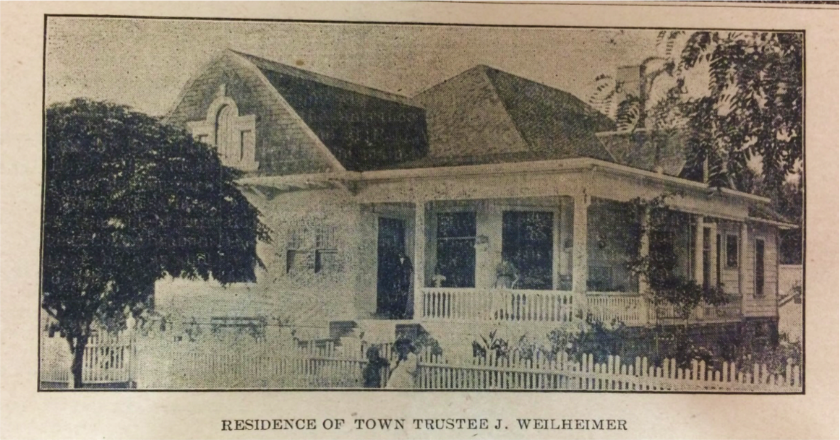
Why these buildings? Weilheimer House was built in 1894 by Julius Weilheimer, son of Seligman Weilheimer, a German-Jewish immigrant who, with his brother, settled in the hamlet of Mountain View in 1853. The town was located at the stage coach stop near Grant Road and El Camino. The Seligman’s general store was followed by many other family businesses including a hotel, livery, and additional general stores.
In 1865 the “new” Mountain View was laid out along the Southern Pacific Railroad tracks. Known as “Villa Lands” this is the Mountain View we know today. It included Castro, Hope, Villa, Dana, Franklin and Oak Streets. Julius Weilheimer, born in Mountain View in 1860, eventually ran many of the family businesses which by then were located on and around Castro Street. He served as trustee, mayor (holding city council meetings in Weilheimer House), vice-president of the local bank (now Red Rock Coffee) and led the effort to rebuild the downtown after much of it was destroyed in the 1906 earthquake. The Weilheimer’s Farmers’ Store built in 1874 (now the site of Oren’s Hummus) is believed to be the oldest building in Mountain View and possibly the Peninsula. (See more on the history of Castro Street here.)
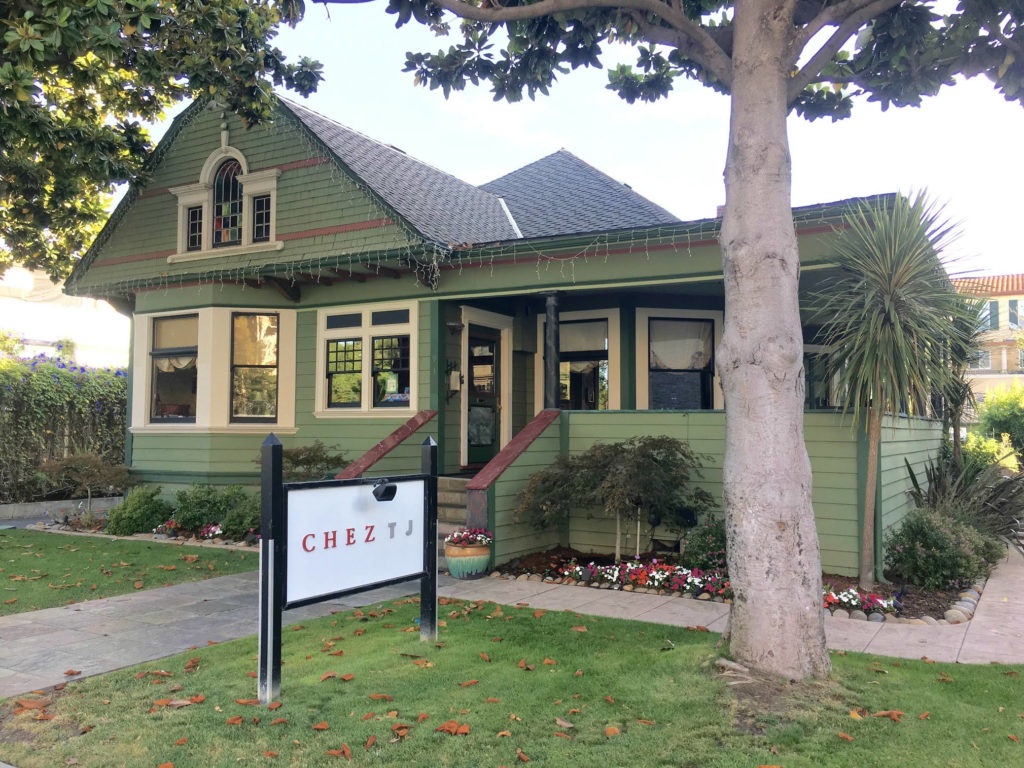
Weilheimer House is also significant as it is an excellent, well preserved example of the Queen Anne style of architecture. This includes a street façade and many original windows which retain their historic integrity. Reused as a restaurant since 1982, the interior has many original features and materials.
Although Julius Weilheimer moved in 1910, the historic significance of his house did not end because the next occupants, Arthur Free and his family, moved in. Arthur Free, a Stanford graduate, was the only Congressional Representative from Mountain View. He served five terms representing Santa Clara County.
What is significant about Arthur Free and Weilheimer House? In the midst of the Great Depression cities across the state competed to be the site of a new airfield to house the massive dirigibles being developed to protect the west coast. Through the efforts of Free and local leaders, Santa Clara County was awarded the airbase in 1930. Congressman Free introduced the “Free Bill” to establish the base and authorize $5 million for construction of what we now know as Moffett Field/Ames Research. President Hoover (who had attended Stanford and knew the area) signed the Free Bill on Feb. 20, 1931 giving control of the site to the Navy who named it after Admiral William Moffett. Thirty Spanish Revival style buildings, a power plant and a laundry were recorded as being built in 1931-1932.
As dirigibles became obsolete, the base was transferred to the Army in 1935 where it became a training facility for the Army Air Corps (U.S. Air Force). In 1939 Congress allotted $10 million for aeronautical research (Ames Research). Pilot training continued at Moffett during World War II. Trainees, including actor Jimmy Steward (It’s a Wonderful Life), frequented Castro Street. We will never know if he was a customer of the Air Base Laundry as well.
Thus, Weilheimer House directly links Gold Rush pioneers to the research and development of technology which is Silicon Valley.
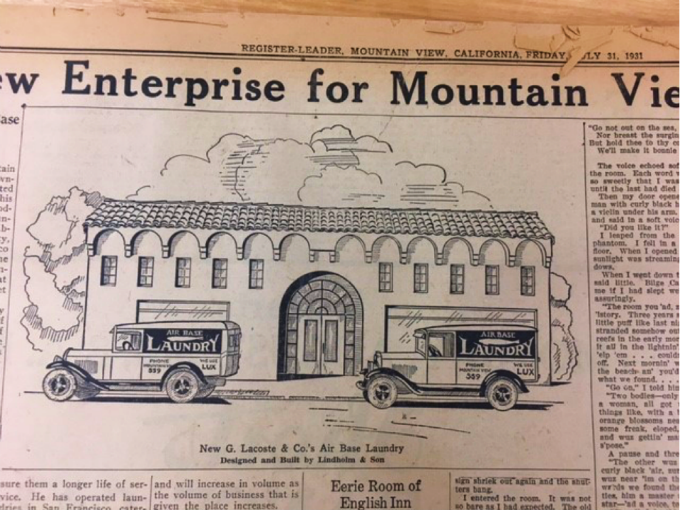
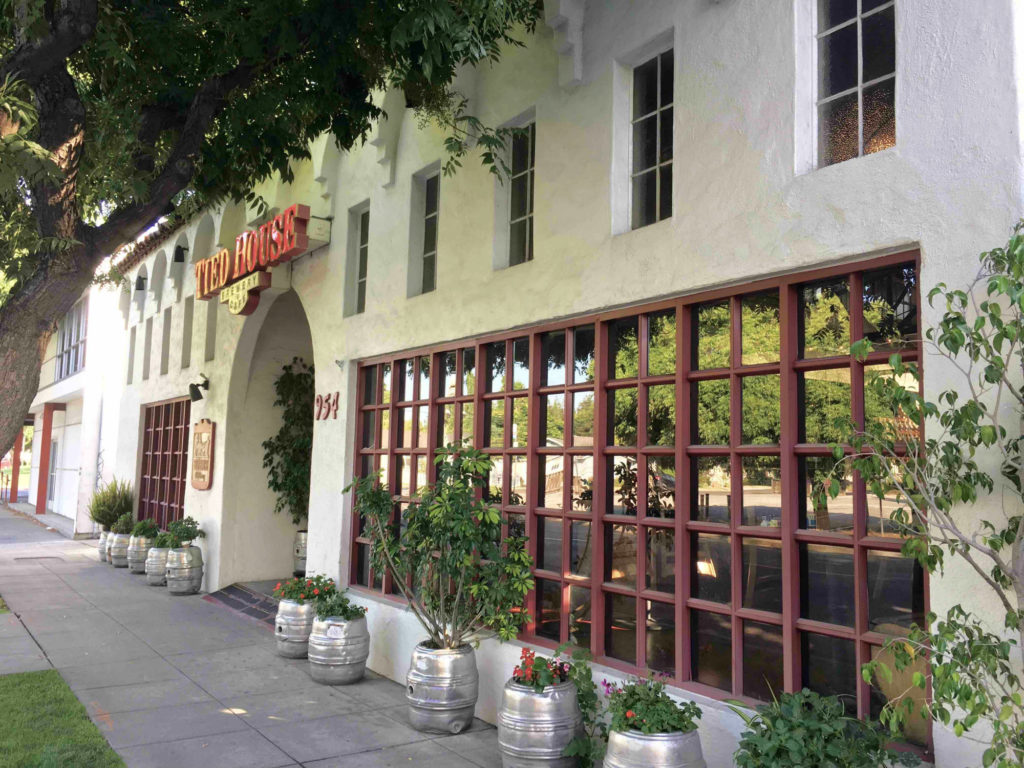
Why Preserve Air Base Laundry/Tied House? Built in 1931, at the same time as the Air Base, this building served the Base and was clearly built to match the thirty beautiful Spanish Revival Buildings which are on the National Register of Historic Places. It retains its stucco finish, red roof, original upper story windows and corbels below the roof line. Although updated since 1931, the materials and scale of the doors and windows are consistent with that of the original building.
Thus, by history, function and design the Air Base Laundry is our link to the earliest air and space technology and the events which brought us today’s technological world.
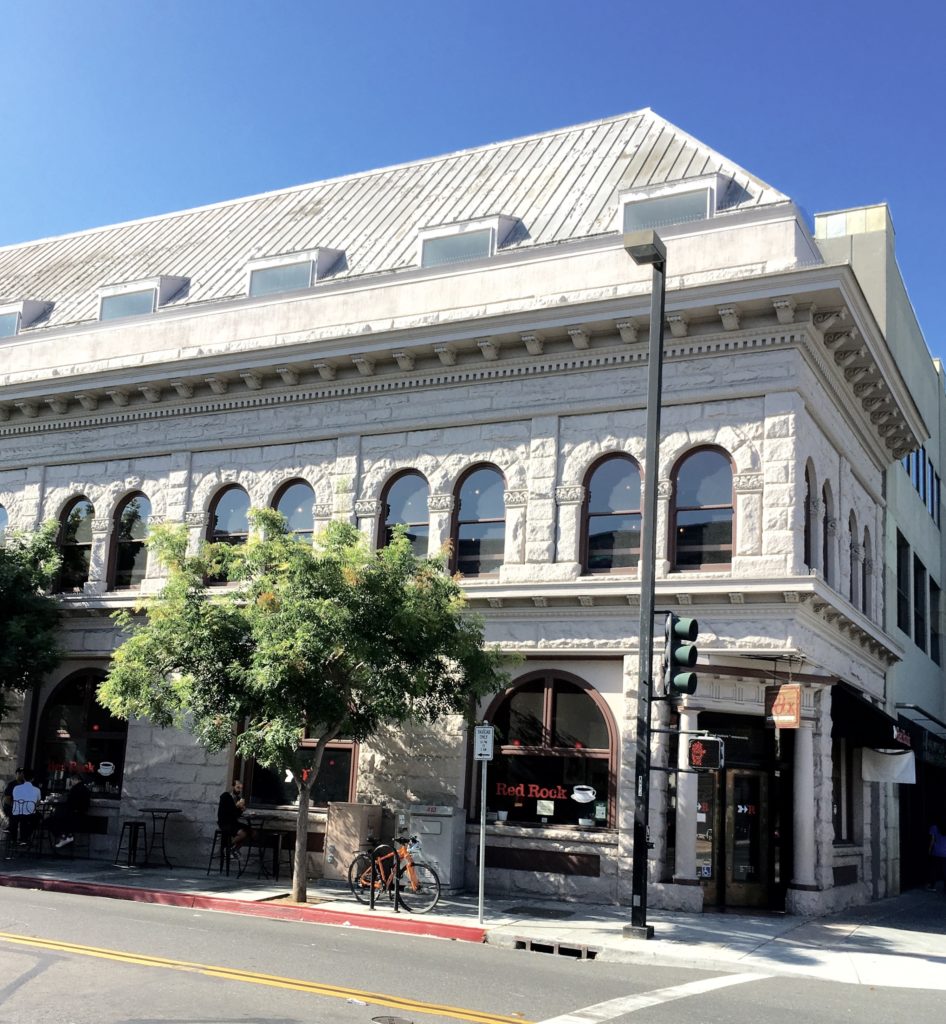
Red Rock: 201 Castro 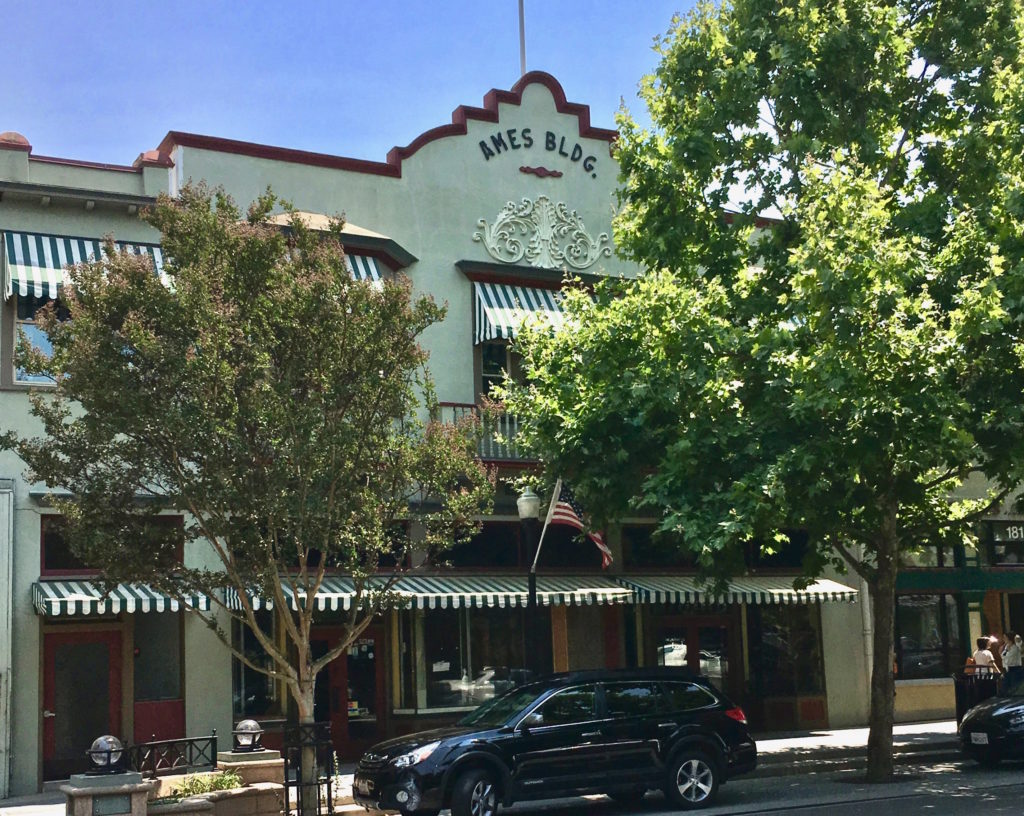
Ames Building: 171 Castro
• 1852 The first Mountain View was a tiny settlement formed around the first stagecoach stop for the first stagecoach service originated by John W. Whisman near Grant Road and El Camino. Richard Carr opened the first general merchandise store.
• I853 the Weilheimer brothers, Seligman and Samuel, German-Jewish immigrants, arrived from Germany and to take a shot at the American Dream. they opened the second general merchandise store. Competition and diversity had an early start in Mountain View.
• 1854 The settlement is named “Mountain View” by a local store shop keeper and post master, Jacob Shumway.
•1856 The Weilheimer brothers established a general store, livery, and hotel in Mountain View.
•1860 The census listed Julius Weilheimer as being 9 months old. He will eventually run the family businesses, serve as town mayor, town trustee, help create and serve as vice president of the local bank (now occupied by Red Rock Coffee) which eventually became Bank of America, built and resided in the Weilheimer House at 938 Villa in 1894 (currently occupied by Chez TJ), lead the effort to rebuild a shattered downtown after the 1906 earthquake, and serve as postmaster and Wells Fargo representative among other contributions to our city.
•1864 The railroad in the form of the Southern Pacific arrived and by locating its rail line in its present location, the Mountain View we know today grew and prospered.
•1865 The new Mountain View town grid was laid out and remains today with Castro as the main street. The area was called Villa Lands.
•1867 Rengstorff House was built.
•1870-71 The Weilheimer brothers thrived and opened more businesses on and near Castro Street. Their 1874 Farmers Store at 124 Castro Street remains today and is occupied by Oren’s Hummus. It is believed to be the oldest building on Castro Street and perhaps the peninsula.
•1880 The Weilheimer family built its home and opened a stable on what is now Evelyn Street with and another general merchandise store in the first block of Castro Street.
• 1902 Mountain View was incorporated, Mountain View High School opened. We had electric streetlights, telephone service and a municipal water system.
•1905 The Ames Building at 171 Castro Street, was built with its Spanish influenced tiled roofline and is one of Castro’s oldest commercial structures. For decades it was occupied by the Jehning family lock business and Lock Museum.
•1906 The Mockbee Building at 191 Castro Street, occupied by Knapps, is an example of the Italiante Style of commercial buildings popular in Mountain View. It was originally a hardware store and meeting place for civic groups.
•1906 the San Francisco Earthquake destroyed many downtown businesses including the Ames Building which was quickly rebuilt.
•1913 The Jurian Building at 194 Castro Street, most recently a candy and pop shop, was a drug store and general merchandise building that had a hall upstairs for dances, civic gatherings and celebrations.
•1920 The Farmers and Merchants State Bank at 201 Castro Street, now occupied by Red Rock Coffee was built with the participation and investment of Julius Weilheimer and remains a distinguished building with Romanesque features and elaborate decoration.
•1933 U.S. Naval Air Station, Moffett Field was established with buildings in the Spanish Revival style then popular in California. The Air Base Laundry, now occupied by Tied House, opened at 954 Villa Street to serve the needs of the Air Base and utilized the same Spanish Revival architecture, as do other buildings in Mountain View, Sunnyvale and Palo Alto.
An old idea is making a comeback as Bay Area Cities invest in Land Trusts. Why hasn’t Mountain View considered this option? Read this article about how it’s working in Oakland.
A home you can afford: How land trusts are changing Bay Area home ownership – July 30, 2018, SJ Merc.
Also take a look at the Oakland Community Land Trust‘s site which explains more about their work.

Recent Comments